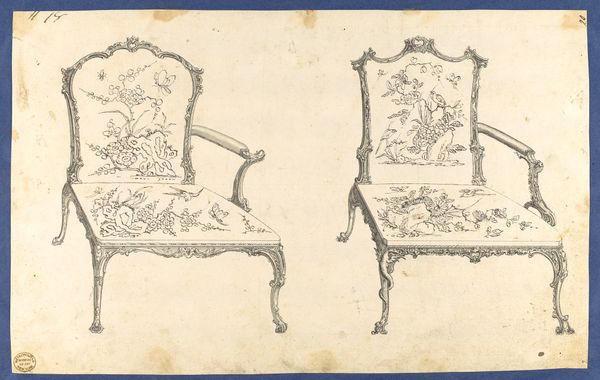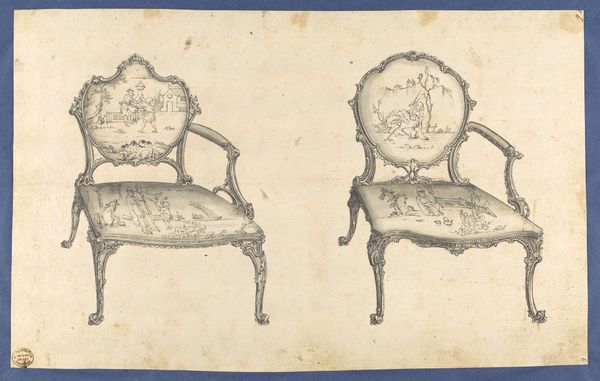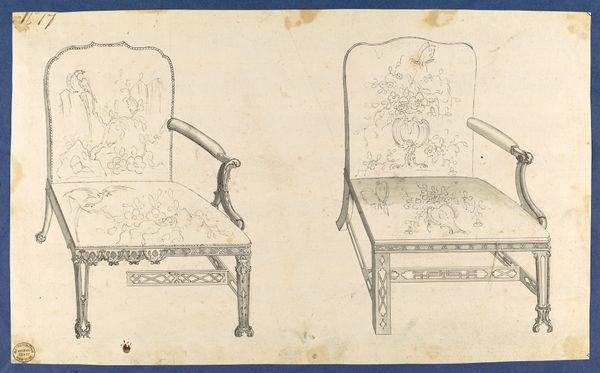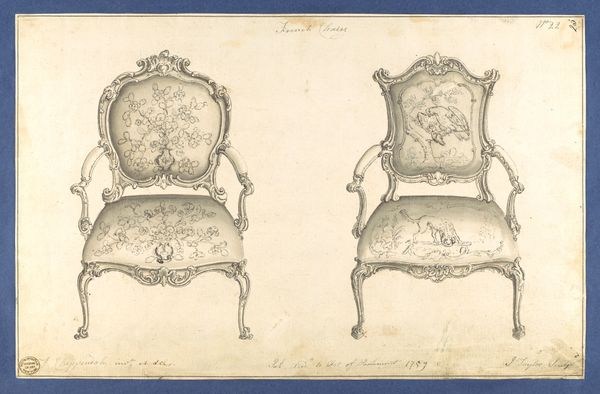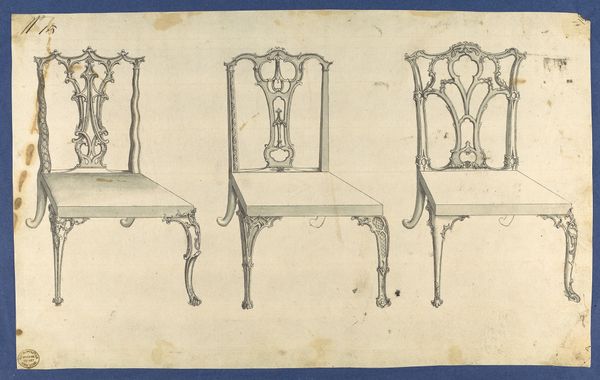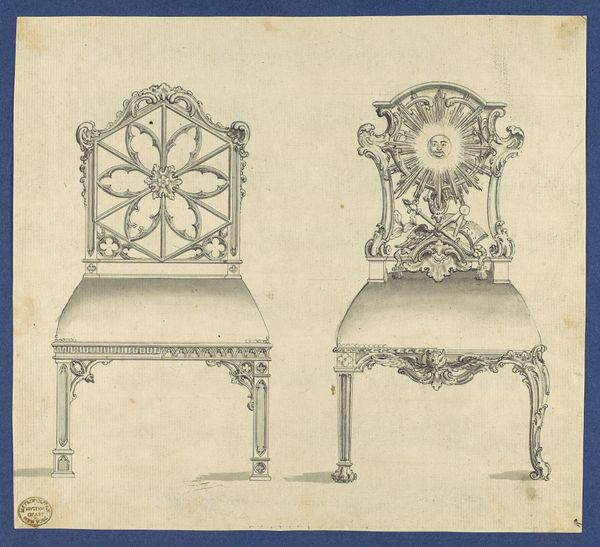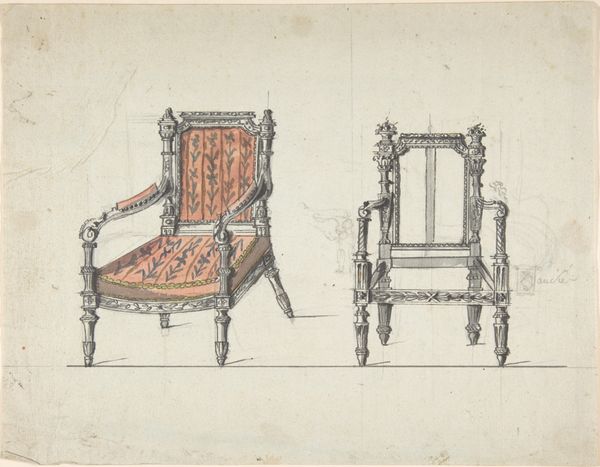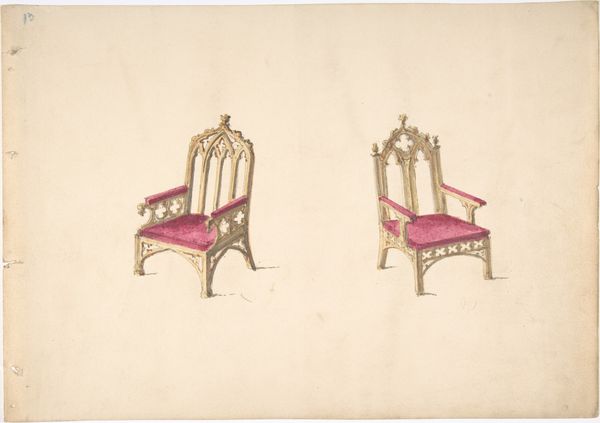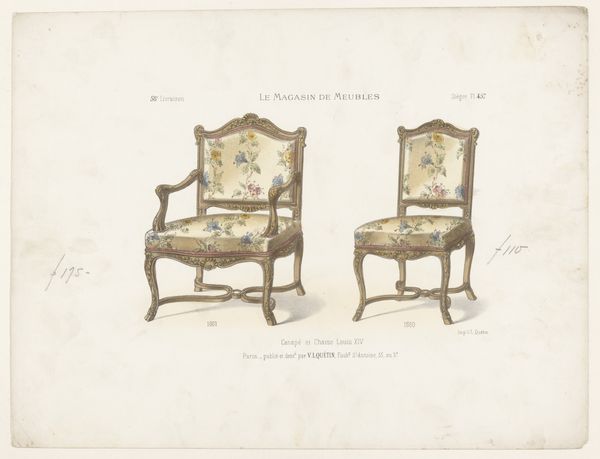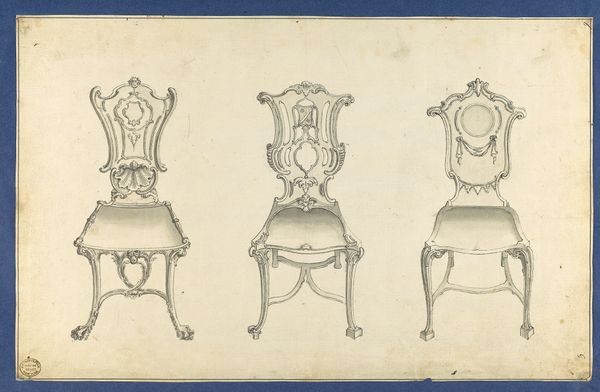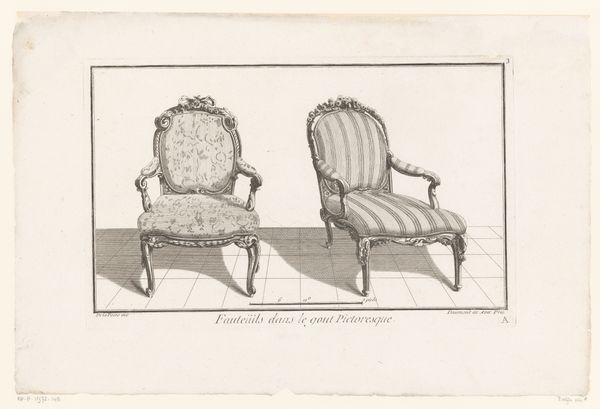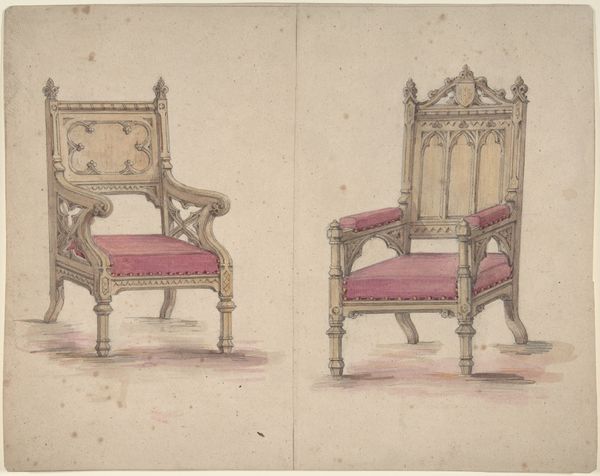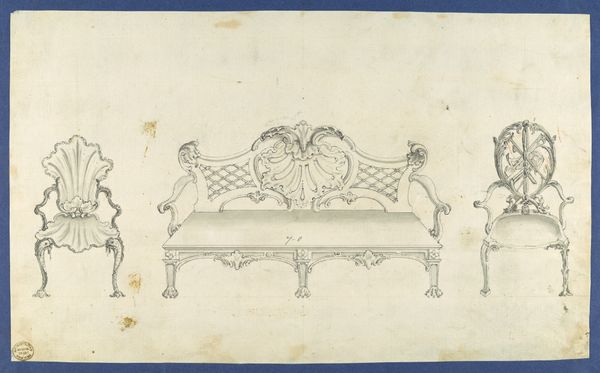
Two French Chairs, in Chippendale Drawings, Vol. I 1753
0:00
0:00
drawing, print, ink
#
drawing
# print
#
ink
#
history-painting
#
academic-art
#
decorative-art
Dimensions: sheet: 8 1/16 x 12 15/16 in. (20.5 x 32.9 cm)
Copyright: Public Domain
Editor: This is “Two French Chairs, in Chippendale Drawings, Vol. I,” a pen and ink print from 1753 by Thomas Chippendale. These aren’t just chair designs, but each seems to have a narrative woven into the upholstery and back. What stories do you think they are trying to tell? Curator: They’re potent cultural artifacts, aren’t they? Look how the drawings embody both status and escapism. Each chair depicts a different tableau. The imagery harkens back to the romanticized visions of distant lands popular in the 18th century, fueled by trade and exploration. Notice the almost theatrical rendering of the figures. Editor: So, it’s not necessarily about accurate representation, but more about a feeling, a mood. Curator: Exactly. Consider how these images functioned within the domestic space. What does it say about the aspirations and world-view of those who commissioned and used them? The symbolic weight of each motif—the pagoda, the figures—contributed to an overall sense of cultivated worldliness. Editor: The figures look like they could be right out of history paintings. Curator: Precisely. They’re staged in such a way to give a sense of drama. Chippendale is playing with conventions and, dare I say, colonial fantasies of the era. These designs would become mnemonic devices and conversational pieces in the household. How do you see these chairs functioning within contemporary society? Editor: Hmmm. It feels different today, now that we’re more aware of how the fantasy differs from the reality of colonialism. It’s strange to think about those dynamics when looking at something seemingly so simple like chair design. Curator: It highlights how even the most functional object can be a carrier of ideology and cultural memory. We must engage in both the beautiful form and critical context embedded within its design.
Comments
No comments
Be the first to comment and join the conversation on the ultimate creative platform.
